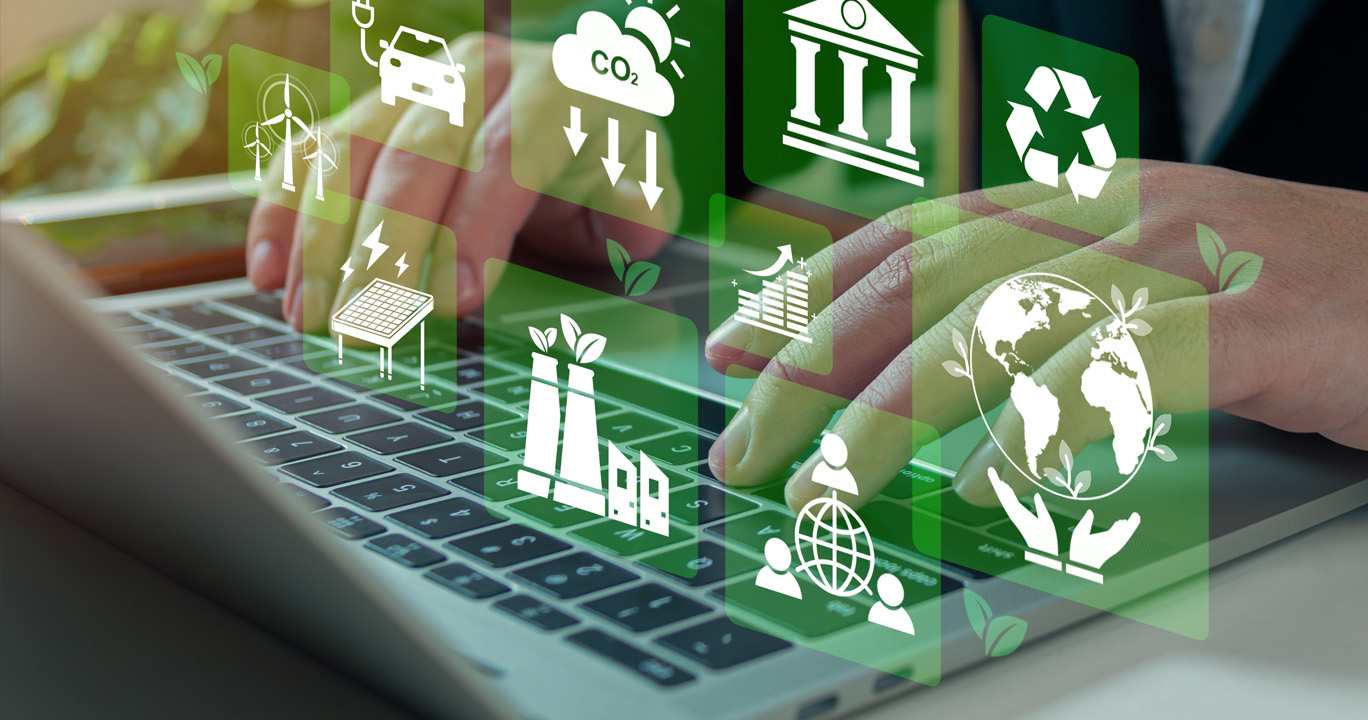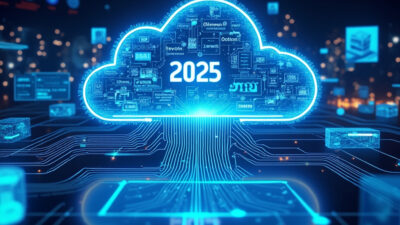Coding for a Greener Future
As we step into 2025, sustainable software development has transitioned from an emerging trend to an essential practice for the tech industry. With an emphasis on reducing the environmental impact of digital expansion, this approach integrates ecological considerations at every phase of the software development lifecycle. It’s a critical shift towards minimizing digital carbon footprints while fostering technological progress and business growth.
The Essence of Sustainable Software Development
Sustainable software development is more than a trend—it’s a paradigm shift reshaping how technology interacts with the planet. At its core, it integrates ecological mindfulness into every phase of the software lifecycle, from design to deployment. Unlike traditional development, which prioritizes speed and functionality alone, sustainable development demands a balance between innovation and environmental stewardship. This approach acknowledges that every line of code, every server request, and every data transaction carries an energy footprint.
The evolution of this practice stems from the growing awareness of tech’s environmental impact. As digital economies expand, so does their carbon footprint. Data centers alone account for nearly 1% of global electricity demand, a figure projected to rise. Sustainable software development addresses this by embedding efficiency and responsibility into the process. It’s not just about reducing harm but reimagining how software can actively contribute to sustainability goals.
Key to this practice is a holistic view of resource usage. Developers must consider energy consumption, hardware longevity, and even the indirect effects of user behavior. For instance, lightweight applications reduce server load, while modular designs extend software lifespans, minimizing wasteful rebuilds. The shift also demands collaboration across disciplines—engineers, environmental scientists, and policymakers must align to create standards that push the industry forward.
This mindset is no longer optional. With climate urgency intensifying, sustainable software development is a necessity, ensuring that progress in tech doesn’t come at the planet’s expense. The next step? Translating these principles into actionable coding practices that cut energy use without sacrificing performance—a challenge we’ll explore next.
Energy-efficient Coding Practices
Energy-efficient coding practices are a cornerstone of sustainable software development, directly addressing the growing energy demands of digital infrastructure. As software becomes more complex, the environmental cost of inefficient code rises—leading to excessive power consumption in data centers, devices, and networks. Developers must prioritize optimization at every level, from algorithm design to language selection, to minimize energy waste while maintaining performance.
One key strategy is algorithm optimization. Inefficient algorithms require more processing cycles, increasing CPU load and energy consumption. By refining logic, reducing redundant computations, and leveraging caching techniques, developers can significantly cut power usage. For example, replacing a brute-force search with a binary search reduces complexity from O(n) to O(log n), lowering energy demands. Similarly, parallel processing and asynchronous operations can distribute workloads more efficiently, preventing unnecessary idle states in hardware.
The choice of programming language also plays a crucial role. Languages like C and Rust, known for their low-level control and minimal runtime overhead, often outperform interpreted languages like Python in energy efficiency. However, trade-offs exist—higher-level languages may accelerate development but increase runtime energy costs. Developers must balance productivity with sustainability, selecting languages that align with performance and environmental goals.
Beyond efficiency gains, these practices yield tangible business benefits. Energy-optimized software runs faster, reduces operational costs, and extends hardware lifespan. In cloud environments, where energy costs scale with usage, optimized code translates to lower carbon footprints and reduced expenses. By embedding energy-conscious principles into coding standards, developers not only advance sustainability but also build more resilient, scalable solutions for the future.
Lifecycle Assessments for Sustainable Software
Lifecycle assessments (LCAs) are a critical tool for evaluating the environmental impact of software from inception to decommissioning. Unlike energy-efficient coding, which focuses on immediate optimization, LCAs provide a holistic view of sustainability by analyzing every phase of the software lifecycle—development, deployment, usage, and retirement. By quantifying resource consumption, emissions, and waste at each stage, developers can pinpoint inefficiencies and prioritize improvements that yield the most significant environmental benefits.
One often overlooked aspect is the impact of software updates and maintenance. Frequent updates, while necessary for security and performance, can contribute to increased energy use and electronic waste if not managed sustainably. LCAs help teams assess whether the benefits of an update outweigh its environmental costs, encouraging smarter release cycles and lightweight patches. For instance, a minor bug fix might be bundled with other updates to reduce server load, or deprecated features could be removed to streamline code and lower runtime energy demands.
Moreover, LCAs reveal hidden sustainability gaps, such as the carbon footprint of third-party dependencies or the energy intensity of cloud services. By integrating these assessments into DevOps pipelines, teams can make data-driven decisions—like opting for leaner libraries or greener hosting providers—aligning software evolution with environmental goals.
As the industry shifts toward green infrastructure, lifecycle assessments ensure that sustainability isn’t just a feature of hardware or data centers but embedded in the software itself. This systemic approach bridges the gap between energy-efficient coding practices and eco-conscious infrastructure, creating a cohesive strategy for reducing the digital carbon footprint.
Leveraging Green Infrastructure
The shift toward green infrastructure is transforming how software solutions are hosted and operated, with eco-friendly data centers leading the charge. As the demand for cloud computing and digital services grows, so does the environmental impact of energy-intensive data centers. However, major tech companies are now prioritizing renewable energy sources and innovative cooling technologies to drastically reduce carbon footprints. Google, Microsoft, and Amazon have committed to powering their data centers with 100% renewable energy, leveraging wind, solar, and hydroelectric power to offset their massive energy consumption.
One of the most significant advancements in green infrastructure is the adoption of liquid cooling and passive cooling techniques, which drastically cut energy use compared to traditional air-based systems. Companies are also exploring AI-driven energy optimization, where machine learning algorithms dynamically adjust power usage based on real-time demand, further enhancing efficiency. Additionally, modular data centers—built with sustainability in mind—allow for scalable, energy-efficient deployments that minimize waste.
Beyond energy, sustainable data centers are rethinking hardware lifecycle management. By extending server lifespans through refurbishment and recycling, companies reduce e-waste while maintaining performance. The rise of carbon-aware computing also ensures that workloads are routed to data centers powered by the cleanest energy sources at any given time.
Green infrastructure is no longer an optional upgrade—it’s a necessity for sustainable software development. As the industry aligns with global climate goals, these innovations demonstrate how technology can evolve without compromising the planet. The next frontier lies in integrating these practices with emerging sustainable engineering trends, ensuring that every layer of software development contributes to a greener future.
Emerging Trends in Sustainable Engineering
As the tech industry accelerates its shift toward sustainability, sustainable engineering practices are emerging as a defining trend in software development for 2025. These practices go beyond infrastructure—focusing on how code is written, optimized, and maintained to reduce energy consumption and environmental impact. Developers are now prioritizing energy-efficient algorithms, minimizing computational waste, and adopting methodologies that extend hardware lifespans.
One key trend is the rise of green coding principles, where developers optimize software to run on lower-powered devices, reducing the strain on data centers. Techniques like lazy loading, efficient caching, and minimizing background processes are becoming standard. Companies are also investing in AI-driven code optimization, where machine learning models analyze and refine software to cut unnecessary resource usage without compromising performance.
Another critical shift is the integration of sustainability metrics into DevOps pipelines. Teams now monitor carbon emissions per deployment, energy consumption per feature, and server efficiency in real time. Tools that measure these metrics are being embedded into CI/CD workflows, ensuring sustainability is a continuous priority—not an afterthought.
The industry is also seeing a surge in modular and reusable codebases, reducing redundant development efforts and lowering the carbon footprint of software maintenance. Open-source communities are leading this movement, sharing optimized libraries that promote sustainable coding standards.
As green infrastructure (discussed earlier) lays the foundation, sustainable engineering ensures software itself is designed responsibly. The next chapter will explore how green software tools are enabling organizations to track and manage these sustainability efforts seamlessly, bridging the gap between intention and measurable impact.
Exploring Green Software Tools
As the demand for sustainable software development grows, organizations are increasingly turning to green software tools to align their digital operations with environmental goals. These tools play a pivotal role in managing emissions data, tracking carbon footprints, and streamlining sustainability reporting—key components of a sustainable digital economy.
One major category of these tools focuses on carbon footprint measurement. Platforms like Cloud Carbon Footprint and Microsoft’s Emissions Impact Dashboard provide granular insights into the energy consumption of cloud-based applications, helping teams optimize resource usage. Similarly, Green Coding Tools, such as CodeCarbon, integrate directly into development workflows, estimating the CO₂ emissions generated by code execution in real time.
Another critical area is sustainability metrics and reporting. Tools like Sustain.Life and Watershed enable organizations to aggregate data across operations, automate compliance with environmental regulations, and generate detailed reports for stakeholders. These solutions are becoming indispensable as regulatory pressures, such as the EU’s Corporate Sustainability Reporting Directive (CSRD), mandate stricter disclosures.
The rise of AI-driven optimization tools is also noteworthy. Solutions like Google’s Carbon-Aware Computing leverage machine learning to schedule compute tasks during periods of low carbon intensity in energy grids, significantly reducing emissions.
As the market matures, these tools are evolving beyond mere tracking—they now offer actionable recommendations, fostering a proactive approach to sustainability. Their integration into development pipelines underscores the industry’s shift from awareness to execution, ensuring that sustainability becomes an operational standard rather than an afterthought. This trend aligns seamlessly with the broader adoption of sustainable engineering practices discussed earlier and sets the stage for implementing strategic measures, which we’ll explore next.
Strategies for Implementing Sustainable Practices
To effectively integrate sustainable software development, organizations must adopt a structured approach that aligns technical practices with environmental goals. One key strategy is the establishment of coding standards focused on efficiency. By optimizing algorithms, reducing redundant computations, and minimizing resource-heavy operations, developers can significantly lower energy consumption. For instance, choosing lightweight libraries and frameworks over bloated alternatives can reduce both runtime energy and server load.
Another critical step is team training on sustainability principles. Developers need to understand how their choices—from database queries to caching strategies—impact energy use. Workshops on green coding practices, such as minimizing network calls or leveraging edge computing, empower teams to make eco-conscious decisions without compromising functionality.
Organizations should also implement tools for monitoring software energy consumption. Real-time analytics platforms can track power usage per application feature, helping teams identify inefficiencies. Pairing this with sustainability KPIs—like carbon emissions per deployment or energy efficiency per user session—ensures accountability and continuous improvement.
Selecting cloud providers with strong environmental commitments further amplifies impact. Providers using renewable energy or carbon-neutral data centers reduce the indirect emissions of hosted applications. Additionally, leveraging auto-scaling and serverless architectures optimizes resource allocation, cutting costs and energy waste.
These strategies don’t just benefit the planet—they drive cost savings and operational efficiency. Efficient code reduces server expenses, while energy-aware architectures lower long-term infrastructure costs. By embedding sustainability into development workflows, organizations future-proof their operations while contributing to a greener digital economy.
Monitoring and Reducing Software Energy Consumption
Monitoring and reducing software energy consumption is a critical step in sustainable software development, building on the implementation strategies discussed earlier. As organizations adopt coding standards and train teams on sustainability, they must also integrate tools and methodologies to measure and optimize energy efficiency. Energy profiling tools like Scaphandre and Intel’s Power Gadget provide granular insights into how applications consume power at runtime, helping developers pinpoint inefficiencies.
Machine learning algorithms further enhance this process by analyzing usage patterns and predicting energy-intensive operations. For example, reinforcement learning can dynamically adjust resource allocation in real-time, reducing idle compute cycles without impacting performance. Techniques like code refactoring for energy efficiency—such as optimizing loops, reducing redundant computations, and leveraging energy-aware libraries—can significantly lower power consumption.
Another key practice is carbon-aware scheduling, where workloads are shifted to times or regions with cleaner energy sources. Cloud-native monitoring tools like Google’s Carbon Sense suite enable this by aligning compute tasks with renewable energy availability. Additionally, lightweight containerization and serverless architectures minimize energy waste by scaling resources precisely to demand.
Organizations must also establish energy consumption baselines and set reduction targets, integrating these metrics into their sustainability KPIs. Continuous monitoring ensures that optimizations remain effective as software evolves. By combining these approaches, developers can reduce energy usage while maintaining functionality—bridging the gap between sustainable practices and operational efficiency, and setting the stage for the next discussion on cloud computing’s role in sustainability.
The Role of Cloud Computing in Sustainable Development
Cloud computing has emerged as a cornerstone of sustainable software development, enabling organizations to minimize their environmental footprint while maintaining high-performance standards. By leveraging shared infrastructure, cloud services drastically reduce the need for physical hardware, cutting down on energy consumption, e-waste, and carbon emissions associated with data centers. Unlike traditional on-premise solutions, cloud providers optimize resource allocation dynamically, ensuring that computing power is used efficiently—only when and where it is needed.
One of the most significant sustainable advantages of cloud computing is server virtualization, which allows multiple applications to run on a single physical server, maximizing utilization rates. Leading cloud providers, such as AWS, Google Cloud, and Microsoft Azure, have also committed to powering their data centers with renewable energy, further reducing the carbon impact of hosted applications. Companies adopting cloud solutions can indirectly benefit from these green initiatives without needing to invest in their own sustainable infrastructure.
Choosing the right cloud provider is critical for aligning with sustainability goals. Organizations should evaluate providers based on their energy efficiency measures, carbon-neutral commitments, and data center locations—preferring regions powered by clean energy. Additionally, cloud-native architectures, such as serverless computing, enable applications to scale automatically, eliminating idle resource consumption. Tools like carbon footprint calculators offered by cloud platforms help businesses track and optimize their environmental impact.
By shifting to the cloud, companies not only reduce hardware dependency but also contribute to a circular economy where computing resources are shared and reused efficiently. This transition complements the energy monitoring strategies discussed earlier, creating a holistic approach to sustainable software development. The next chapter will explore real-world implementations, showcasing how businesses have successfully integrated these principles into their operations.
Case Studies: Successes and Challenges
Several companies have pioneered sustainable software development, demonstrating tangible benefits while navigating challenges. Google stands out with its commitment to carbon-neutral operations since 2007. By optimizing data center cooling systems with AI and transitioning to renewable energy, Google reduced its carbon footprint by 40% per user. However, scaling these practices globally required significant investment in infrastructure and partnerships with clean energy providers.
Microsoft offers another compelling case with its Project Natick, an underwater data center experiment. By leveraging natural cooling from ocean water, the project achieved a 40% improvement in energy efficiency compared to land-based centers. Despite its success, challenges like maintenance complexity and environmental impact assessments slowed broader adoption. Microsoft also integrated sustainability into its Azure cloud platform, helping clients measure and reduce emissions—a feature that demanded extensive backend adjustments.
Smaller players like Ecosia, the search engine that plants trees, prove sustainability can be a core business model. Their lightweight algorithms minimize server load, and 80% of profits fund reforestation. Yet, competing with tech giants required innovative revenue strategies and user trust-building.
- Key Benefits: Lower operational costs, enhanced brand reputation, and compliance with tightening environmental regulations.
- Challenges: High initial costs, technical debt in legacy systems, and balancing performance with eco-efficiency.
These examples highlight that while sustainable software development demands effort, the long-term gains—both environmental and economic—are undeniable. The next section will delve into tools and frameworks that simplify this transition.

Conclusions
As we conclude, it’s clear that sustainable software development represents a pivotal shift in the technology sector towards a greener future. By incorporating eco-friendly practices throughout the development lifecycle, the industry is taking substantial steps to mitigate environmental impacts. Embracing these practices not only aligns with global sustainability goals but also offers businesses economic benefits through improved efficiency and reduced costs.



